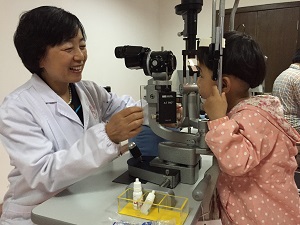Join a powerful, unprecedented alliance for better eye health for all.
Join IAPB-
Choose an alternate language here
One year after school- and community-based screening initiated, many hospitals identified low referral rate and referral update rate in SiB Shanxi CHEER project although a two-way referral networks was established for referral from screening to hospitals and low vision/ rehabilitation at different levels, to early educational intervention in schools and at home (Figure 1). This networks aims to provide children holistic eye health services in terms of prevention, treatment, rehabilitation and early education. How to strengthen the networks became a critical issue and a top topic between hospitals and NGOs at project meetings. We are addressing this issue through following strategies:
 For addressing low referral rate from village screening: We invited hospital staff to visit peer hospital to learn how to effectively conduct screening training, and participate in home visit in order to understand how functional assessment and early educational intervention can help children with visual or multiple disabilities. Then they became confident and proactive in convincing key informants to find and refer cases. Also, we encourage hospitals to identify one lead key informant who loves and dedicates in village screening to be role model to others. School children also played important role in referring non-children in their community
For addressing low referral rate from village screening: We invited hospital staff to visit peer hospital to learn how to effectively conduct screening training, and participate in home visit in order to understand how functional assessment and early educational intervention can help children with visual or multiple disabilities. Then they became confident and proactive in convincing key informants to find and refer cases. Also, we encourage hospitals to identify one lead key informant who loves and dedicates in village screening to be role model to others. School children also played important role in referring non-children in their communityRemark*: Disable People’s Federation
Figure 1: Two –ways referral pathway
Image: Simon Way/Sightsavers